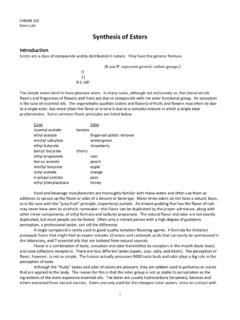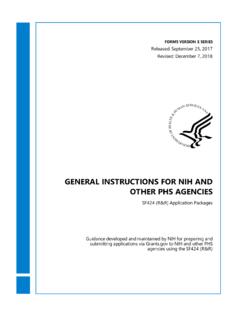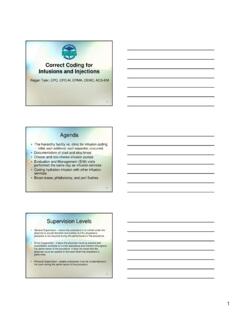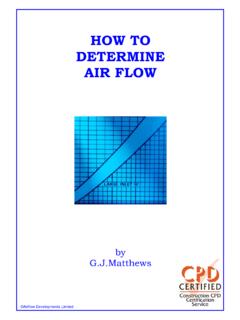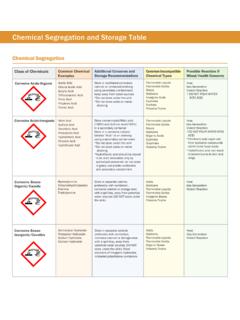Transcription of aspirin tablets titration - Bellevue College
1 Bellevue College | CHEM& 161 1 titration of aspirin tablets In this lab, you will determine the percent purity of two commercially available aspiring tablets using an acid-base titration . In general, an acid and a base react to produce a salt and water by transferring a proton (H+): HA (aq) + NaOH (aq) H2O (l) + NaA (aq) (1) acid base salt The active ingredient in aspirin , and the chemical for which aspirin is the common name, is acetylsalicylic acid. To determine the amount of aspirin (acetylsalicylic acid) in a sample, the precise volume and concentration of the NaOH, and the overall reaction, must be known.
2 The NaOH serves as a secondary standard, because its concentration can change over time. To find the precise concentration of the NaOH, it must be titrated against a primary standard, an acid that dissolves completely in water, has a high molar mass, that remains pure upon standing, and is not hygroscopic (tending to attract water from the air). Because sodium hydroxide is hygroscopic, it draws water from its surroundings. This mean one cannot simply weigh out a sample of sodium hydroxide, dissolve it in water, and determine the number of moles of sodium hydroxide present using the mass recorded, since any sample of sodium hydroxide is likely to be a mixture of sodium hydroxide and water.
3 Thus, the most common way to determine the concentration of any sodium hydroxide solution is by titration . Determining the precise concentration of NaOH using a primary standard is called standardization. You will first standardize your NaOH solution, and then use it to analyze aspirin tablets for their aspirin content and purity. An aspirin tablet may also include inactive ingredients that help produce a consistent product for consumers. Think of the purpose these ingredients serve when considering whether your percent purity is reasonable for a commercial aspirin tablet.
4 What is a titration ? A titration is a procedure for determining the concentration of a solution (the analyte) by allowing a carefully measured volume of this solution to react with another solution whose concentration is known (the titrant). The point in the titration where enough of the titrant has been added to react exactly with the analyte is called the equivalence point, and occurs when moles of titrant equals moles of analyte according to the balanced equation. For example, if a monoprotic acid (the analyte) is titrated with a strong base like sodium hydroxide (the titrant), the equivalence point occurs when number of moles of OH = number of moles of HA.
5 (2) The equivalence point is often marked by an indicator, a substance that changes color at (or very near) the equivalence point. 1 There are many types of titrations . In this lab you will be performing an acid base titration . 1 The point at which the indicator changes color is called the endpoint . We will normally assume that the endpoint is equal to the equivalence point. analyte Titrant (in buret) Bellevue College | CHEM& 161 2 Background Standardizing a Base Consider the following reaction between oxalic acid, H2C2O4(aq), and potassium hydroxide: H2C2O4(aq) + 2 KOH(aq) 2 H2O(l) + K2C2O4(aq) (4) If g of oxalic acid was dissolved in water and titrated with mL of potassium hydroxide solution, the concentration of the potassium hydroxide solution can be calculated.
6 Since mL of potassium hydroxide solution is used, that volume is converted to liters and put into the denominator: molarity of KOH = [KOH] = mol L KOH (5) The mass of oxalic acid, H2C2O4(aq), and Equation (4) are then used to determine the number of moles of potassium hydroxide present: g H2C2O4 mol g H2C2O4 2 mol KOH 1 mol H2C2O4 = mol KOH (6) Finally, the molarity for potassium hydroxide is calculated as follows: molarity of KOH = [KOH] = mol L KOH M KOH (7) Determining the Number of Moles of an Acid Once a solution has been standardized, the solution can be used to determine the molar concentration of another solution, or simply the number of moles of analyte in the flask.
7 Combined with the precise molar concentration of the titrant, the precise volume of titrant delivered yields the number of moles used to react with the analyte. Consider the following reaction between a monoprotic acid and potassium hydroxide: HC9H7O4(s) + KOH(aq) H2O(l) + KC9H7O4(aq) (8) Suppose grams of acid require mL KOH for neutralization. The volume (in liters) and the molarity of potassium hydroxide and Equation (8) can be used to determine the number of moles of acid present: L mol KOHL 1 mol HA 1molKOH = mo l H A (9) Laboratory Technique for Burets Burets are used to deliver a recorded amount of liquid or solution to another container.
8 A buret is marked in milliliters like a graduated cylinder, but buret markings show 0 mL at the top, and the numbers increase as you go down the buret. The stopcock controls the liquid flow. It is open when parallel to the length of the buret and closed when perpendicular to the length of the buret. Washing and rinsing the buret: To clean a buret, wash its interior with soap and tap water. Next, rinse the buret with 5-10 mL portions of DI water. With the buret over the sink and the stopcock open, Bellevue College | CHEM& 161 3 pour the water into the buret and let it drain out the tip.
9 Use a beaker to pour solutions into the buret most breakage occurs during washing, and burets do NOT fit under the faucet. Conditioning the buret: After the buret is well-drained, close the stopcock and add about 5 mL of the titrant (the solution to be used into the buret). Tilt the buret sideways and roll the barrel to completely rinse the inner walls of the buret. Drain the solution through the buret tip to insure the tip is also conditioned. Repeat this step at least twice to be sure all interior surfaces are rinsed with titrant. Filling the buret: Close the stopcock.
10 Use a clean funnel to fill the buret with titrant just above the 0 mark. Place a container under the buret tip, and open the stopcock briefly to fill the buret tip with solution, leaving no air bubbles, and to get the level of meniscus to fall within the markings of the buret. If the tip does not fill with solution when the stopcock is in the open position, there may be an air bubble in the stopcock. Consult your instructor. Note: The initial level of titrant need not be exactly at mLas the initial level of liquid will be recorded and subtracted from the final volume to determine the volume delivered.

